Nearly two years ago, Total Football Analysis scouted Tolu Arokodare, who had just signed for Genk after a promising loan spell at Ligue 2 club Amiens.
Now, 22 months later, Arokodare is the leading goalscorer in the Belgian Pro League, with eight goals in 14 games this season — accurate at the time of writing.
His goals have helped propel Genk to a five-point lead at the top of the table, with De Smurfen eyeing their first league title since 2019.
This scout report will examine Arokodare’s development as a player over the last two years since his arrival in northeast Belgium and the keys behind the success of the latest Nigerian striker to make a name for himself in the Pro League.
Tolu Arokodare Data Analysis
To kick off this section, where we’ll be looking at some of Arokodare’s most eye-catching data points, it only makes sense to start with what’s led to him being the top scorer in Belgium this year: shots.
Tolu Arokodare Shots Map 2024/2025
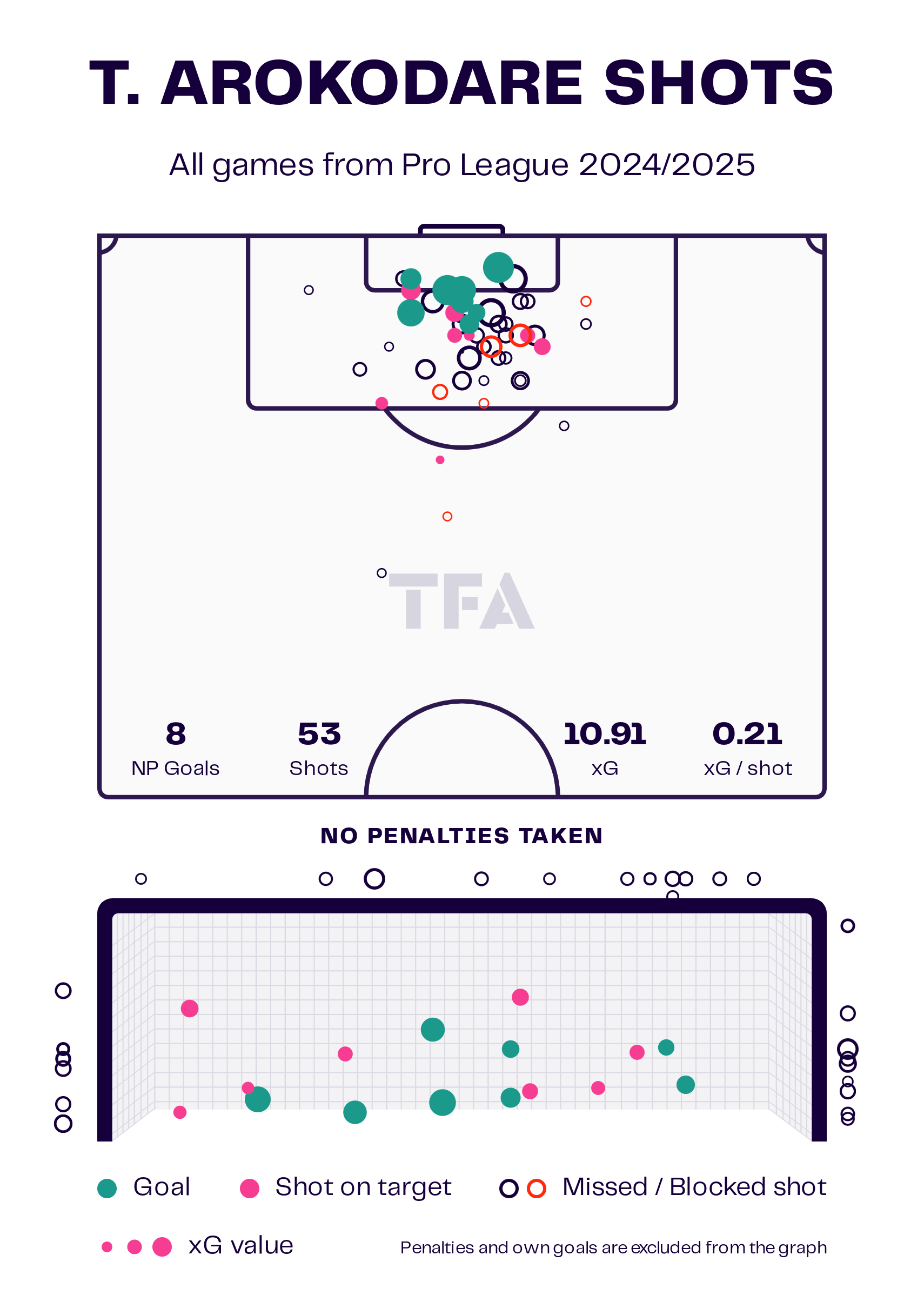
In his 14 league appearances for Genk this term, Arokodare has fired 53 shots, averaging nearly four shots per game.
Most of his attempts have come from inside the opposition’s penalty area, with only four coming from outside the box.
Aside from the fact that he’s the top scorer and has not taken any penalties yet, what’s impressive is how many higher xG value attempts he’s had, evidenced by his 0.21 xG per shot.
All of his goals have come from less than 12 yards out if we look at the green circles, while he’s also had other opportunities from a similar range that didn’t quite hit the mark.
Although he is topping the scoring charts in Belgium, it’s interesting to note that he is actually underperforming his expected goals (xG) for the season as a whole.
With eight goals scored and an overall xG of 10.91 for the season, Arokodare scored three fewer than his shot selection chart suggests he should have, and the value of those attempts suggests he should have.
Nevertheless, he’s still performing very well overall and looks to be on course to manage 20 league goals for the first time in his career at his current rate and if he can maintain a clean bill of health throughout the campaign.
Tolu Arokodare Heatmap 2024/2025
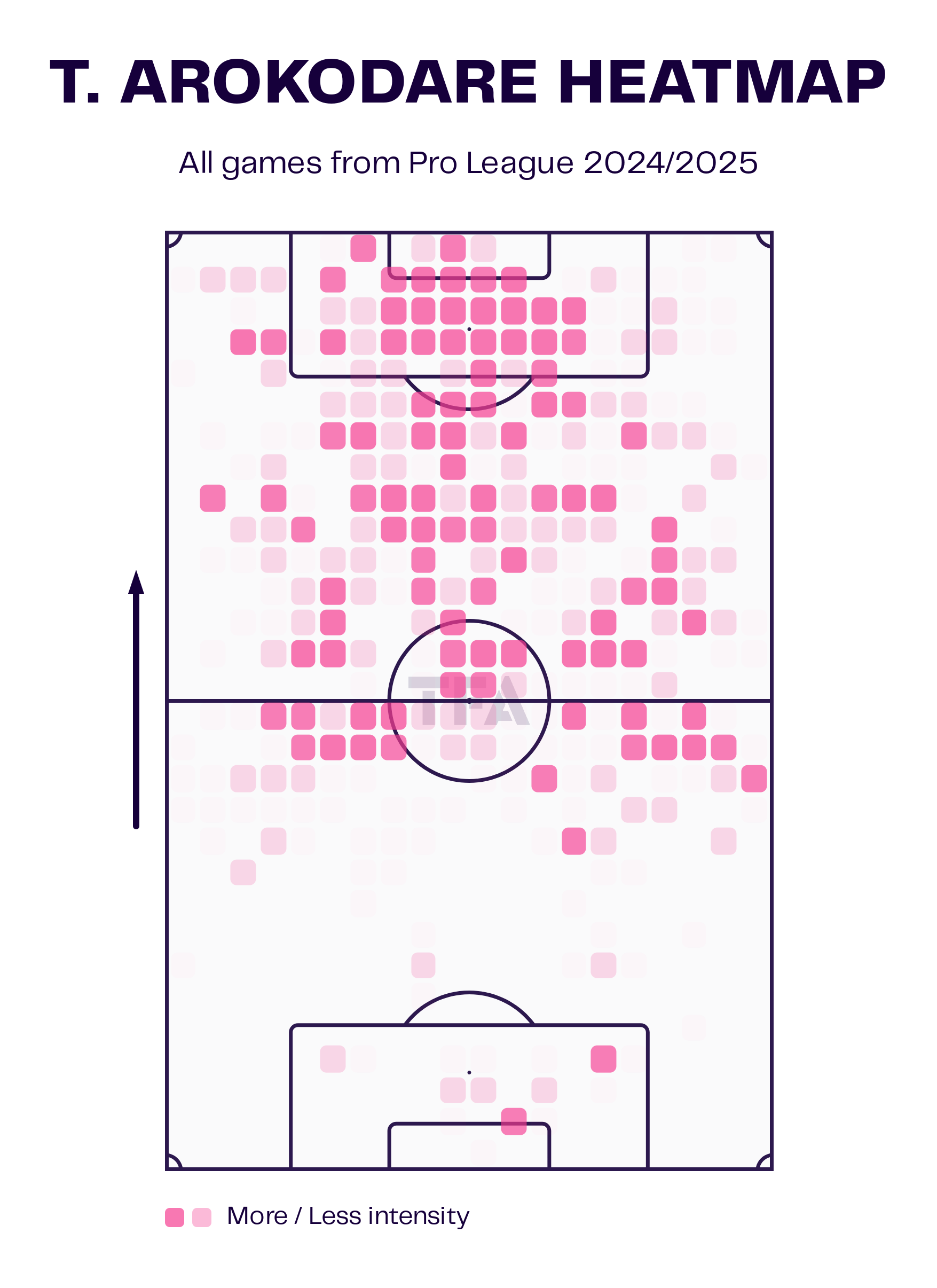
While his efficiency in the box has caught the headlines this season, Arokodare is far from a static striker.
As we can see from his heatmap above, while he is more active in opponents’ penalty areas than anywhere else on the field, he also participates in other areas across the pitch.
The redder blocks indicate the intensity of his movements on the field, which we can also find on the right, left, and centre of midfield.
Although his contributions outside the box may need work (more on that later), his application to the game should not be questioned.
Tolu Arokodare Defensive Territory Map 2024/2025
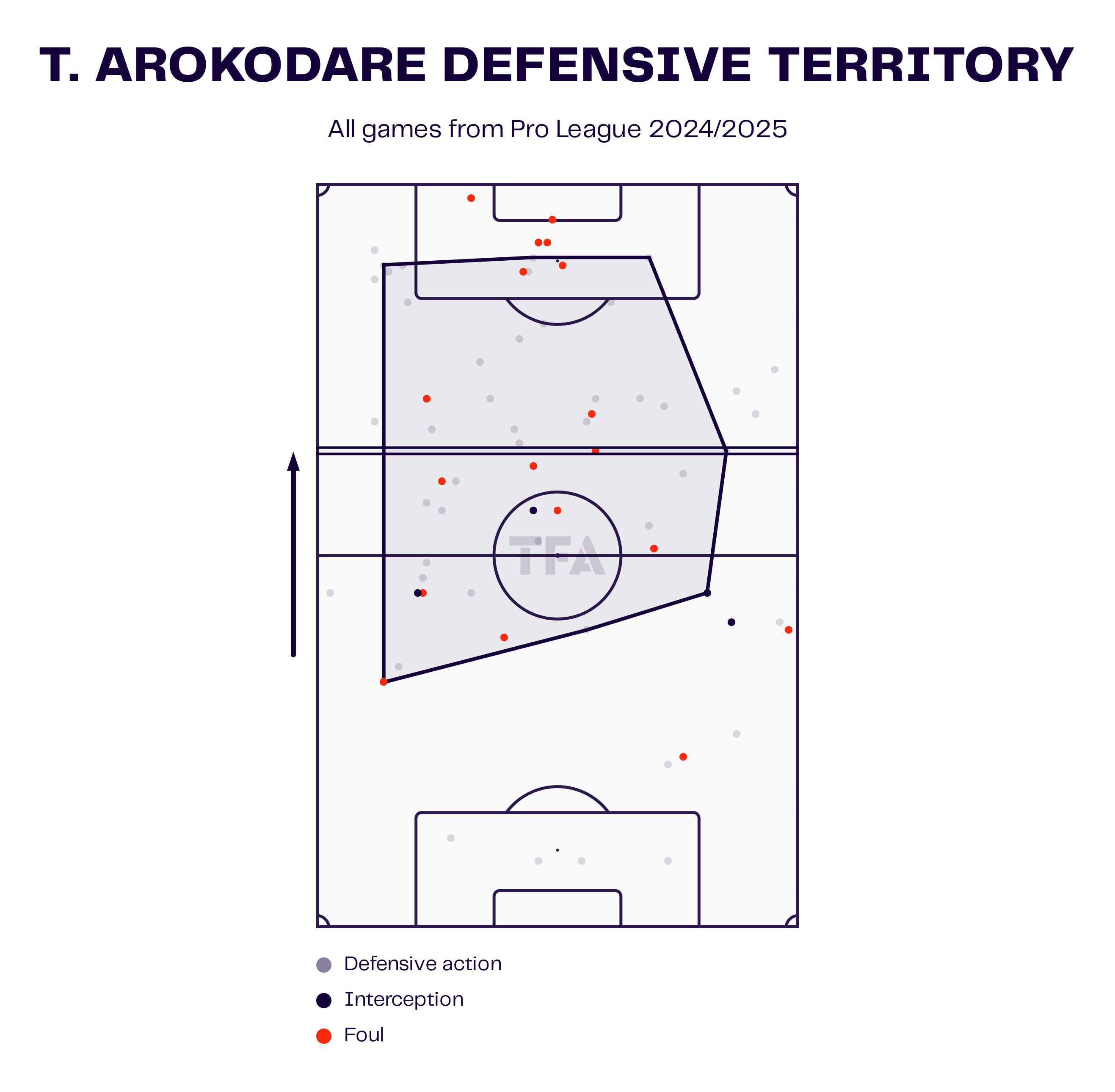
The data visualization above highlights Arokodare’s defensive actions this season in the Pro League, and as we can see, they’ve been mixed.
While he is active in the sense of attempting to make defensive plays off the ball for his team, he has had limited success in this regard, but again, more on that later.
Now that we’ve covered some key data points, let’s see some in-game examples of him as a player this year and how far he’s come since his time in France.
Keys To Goalscoring
In this section, we’ll analyse some of Arokodare’s goals this season in further detail and try to uncover some of the reasons behind his success in front of goal.
Let’s start with this one below at Gent on October 27th.
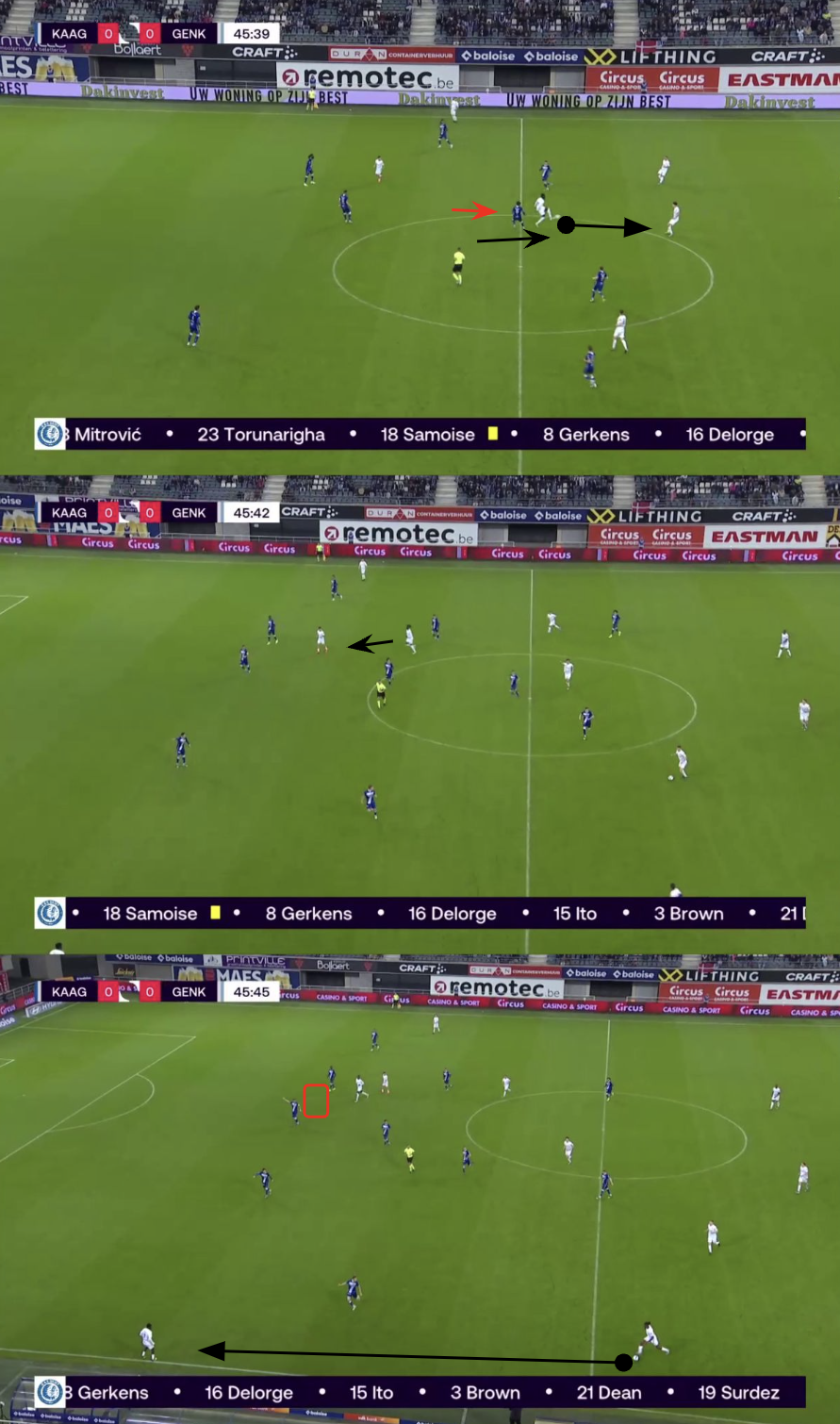
With the second half just starting, Arokodare found himself in a slightly deeper position, which we can see in the first image as he plays the ball back to his defender before falling into an early Gent press.
In the second image, as his side resets the play and begins a new build-up phase from the back, we can see Arokodare patiently heading back towards his centre-forward position.
As Genk finds an opening down the left-hand side to play into, with their opponents not set defensively to defend that space, Arokodare is back up front and notices a gap between Gent’s two centre-backs.
Neither is really too attentive to the Nigerian at this point in image three.
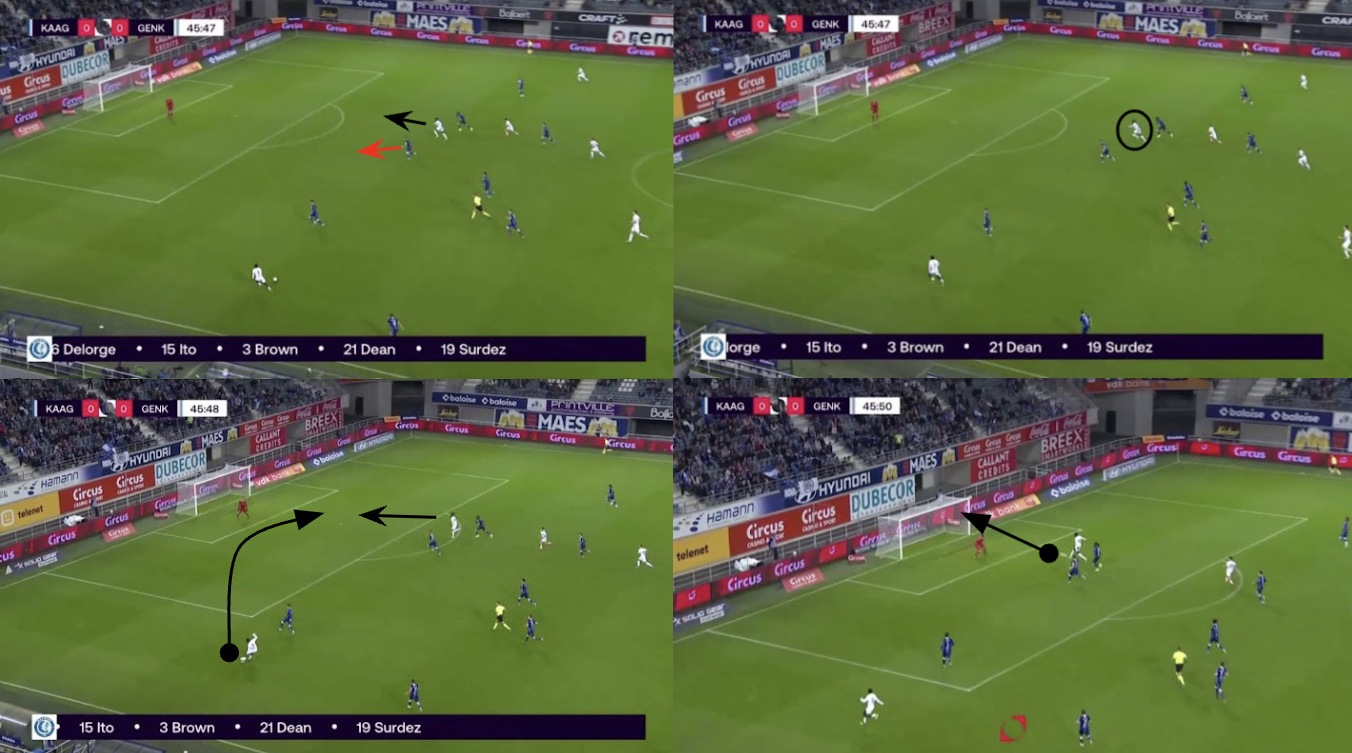
As the ball arrives to the left winger in space, Christopher Bonsu Baah, pictured in images four and five, you can notice a change in Arokodare’s body language as he senses an opportunity to get on the end of a cross by exploiting the aforementioned space between the central defenders, who still aren’t picking him up.
Baah collects all of this information early enough to decide to time his cross perfectly in sync with Arokodare’s run into the space in front of the goal, illustrated by the line in image six.
He then produces an emphatic finish by guiding the cross with power to add his strike into the roof of the net to give Genk the lead in image seven.
Arokodare’s patience in timing his run all the way through this play was impressive, as was his movement into the right space in between the two central defenders, even if they should have done more to get close to him at some point, given there was no other threat for them to cover.
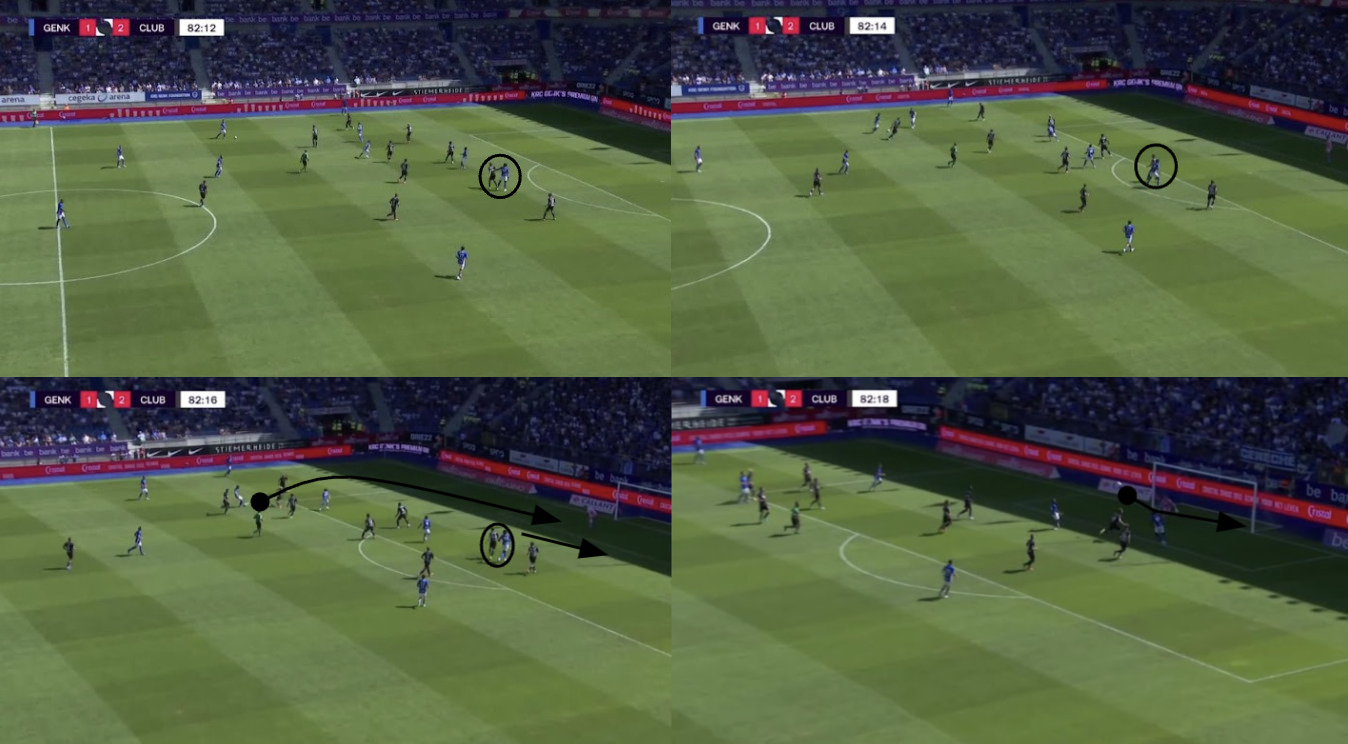
The next goal we’ll dissect is the above one from the home win against Club Brugge on August 11th, early in the season.
Genk were chasing the game late on at this point and began to send a number of bodies forward, with six players spotted ahead of the ball carrier in the first image.
One of them is Arokodare, who is feeling out his marker in the circle in the middle of images one and two to get a sense of where he is and figure out his next movement as the play advances.
As the cross from Jarne Steuckers comes in on the third graphic, we can see that Arokodare has created a tiny bit of space on the shoulder of the defender he was previously tussling with.
One hand is still on him to ensure he always knows where he is.
Finally, he makes the run to the far post to get on the end of the cross and send a bullet header into the back of the net for the equaliser, again timing his movement to perfection as the ball entered the box.
In this situation, he had a lot more attention from the defender to deal with than in the previous example.
Still, he handled it perfectly and used his senses, 6’6’ frame, and intelligence to find space and time to run into it exactly when needed.
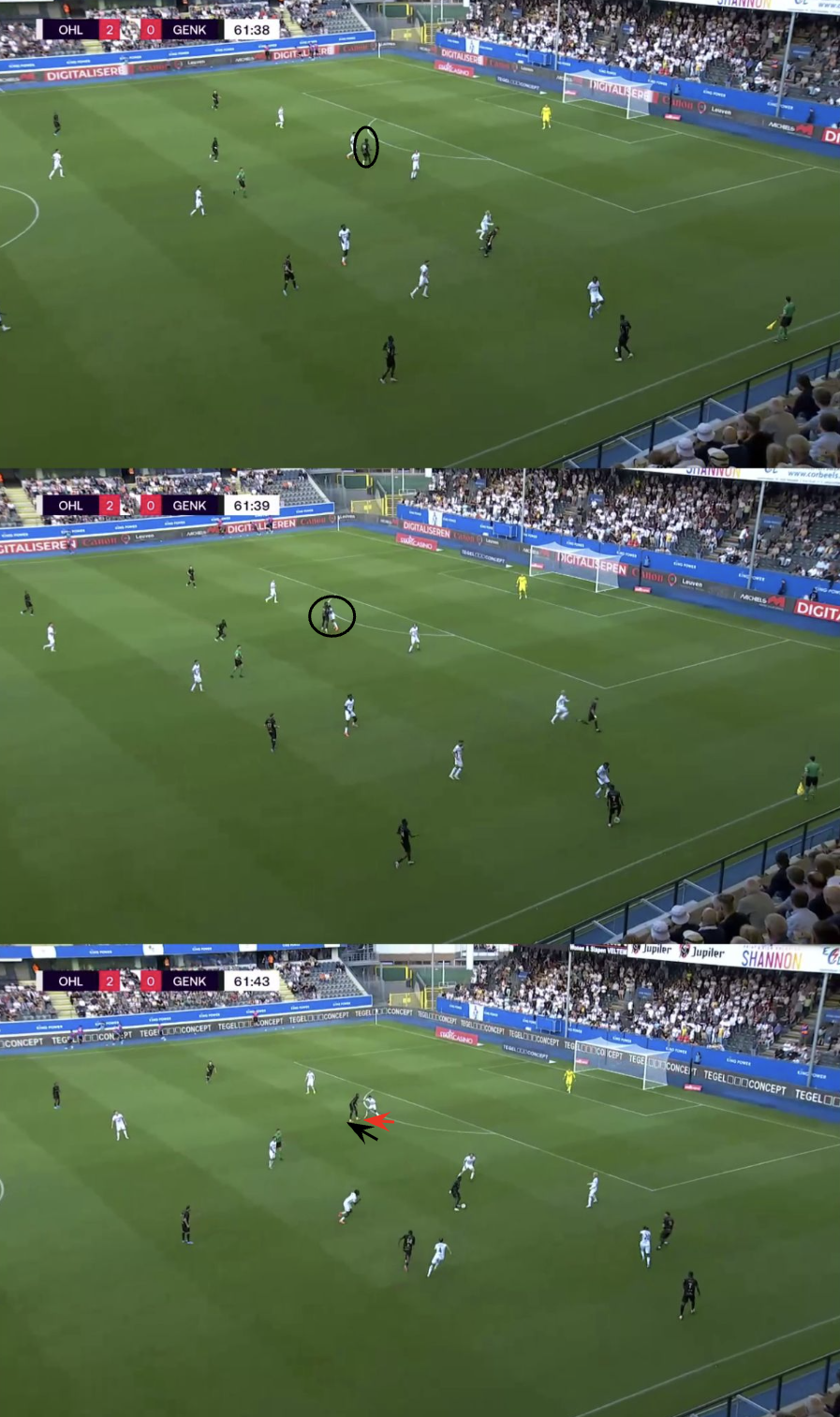
We’ll examine one more goal from the Leuven game and see a bit more variety in Arokodare’s movement than in the previous two examples.
In the first image, with the ball out wide on the right, his starting position is in the centre of the attack between two centre-backs, but in image two, we can see him move more towards his left, where he gets into a physical battle with the defender standing there.
As the ball comes into the middle with Genk progressing into the final third, we can see Arokodare on the left of the right-sided centre-back, who has his arm out to ensure he’s aware of the Nigerian’s position in image three.
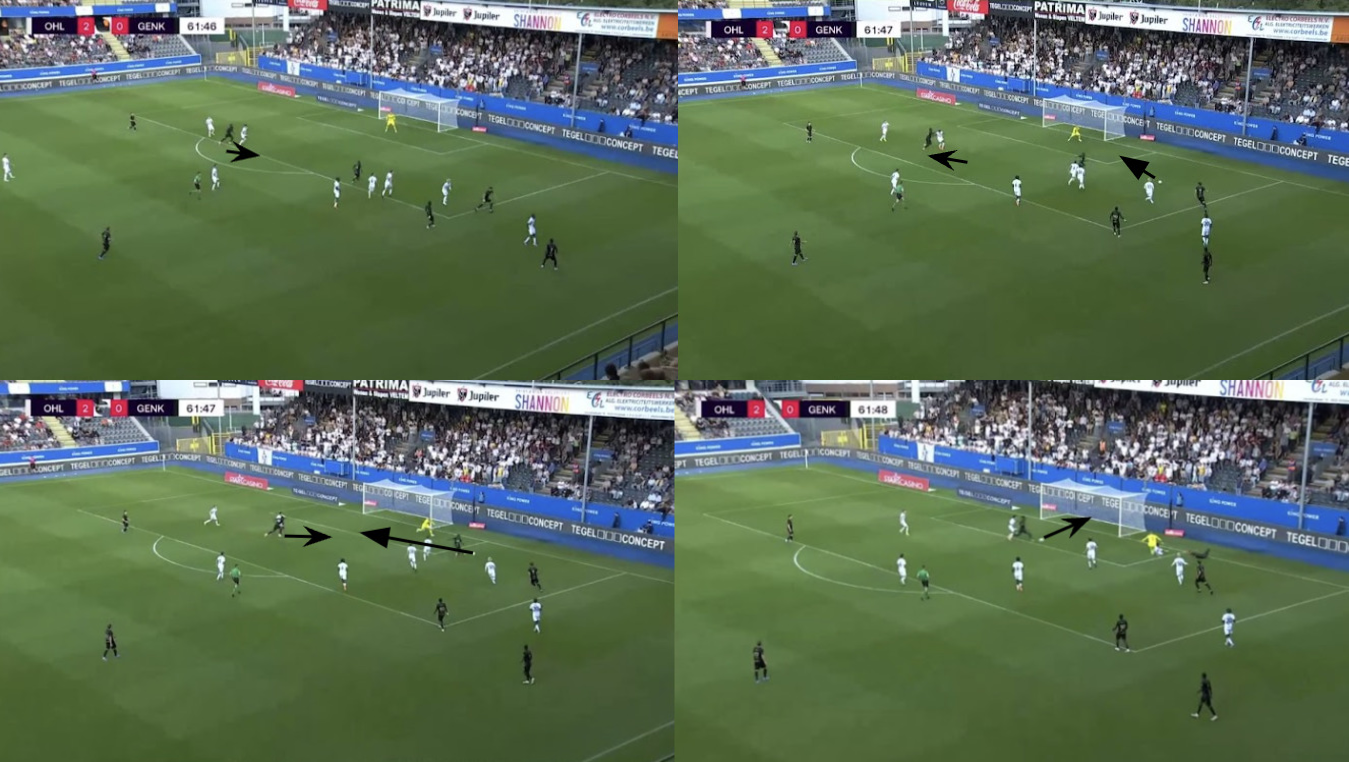
Then, with the ball going back out wide again in the fourth image, Arokodare starts to change the direction of his run towards the near post.
At this point, the defender does not pay attention to or look at him.
With the ball played into the box in image five, he pulls back instead of committing to his previous decision of moving towards the near post. He again gets a feel of the same defender to ensure he knows where he is positioned before making a new decision.
Finally, with the ball reaching the byline and being cut back by his teammate Yira Sor, he changes the direction of his run yet again by going across the defender towards the near post, where he reaches the ball for an easy tap-in to reduce the deficit.
On this goal, he changed his run multiple times to manipulate the defender, and once again, he succeeded with great timing and keeping up with the play the whole way through.
So it’s obvious that the biggest key to his goalscoring success is his off-the-ball movement, the different ways he can find spaces in the box, and the timing of his runs to get away from defenders at the crucial moment to get into a scoring position.
Arokodare exhibited these traits even in the French second division while at Amiens.
Still, with more experience, a better-quality team behind him, and using his physical gifts in the right manner—he put on ten more pounds compared to early 2023—he’s an even more refined striker and goalscorer now than he was then and is only getting better with time.
Now that we’ve seen what is bringing him success in front of goal, let’s look at what else he’s bringing to the Genk collective as a whole.
Tolu Arokodare Team Contributions
Tolu Arokodare Pressing Abilities
Next, we’ll look at another area of his game that doesn’t require the ball: his pressing.
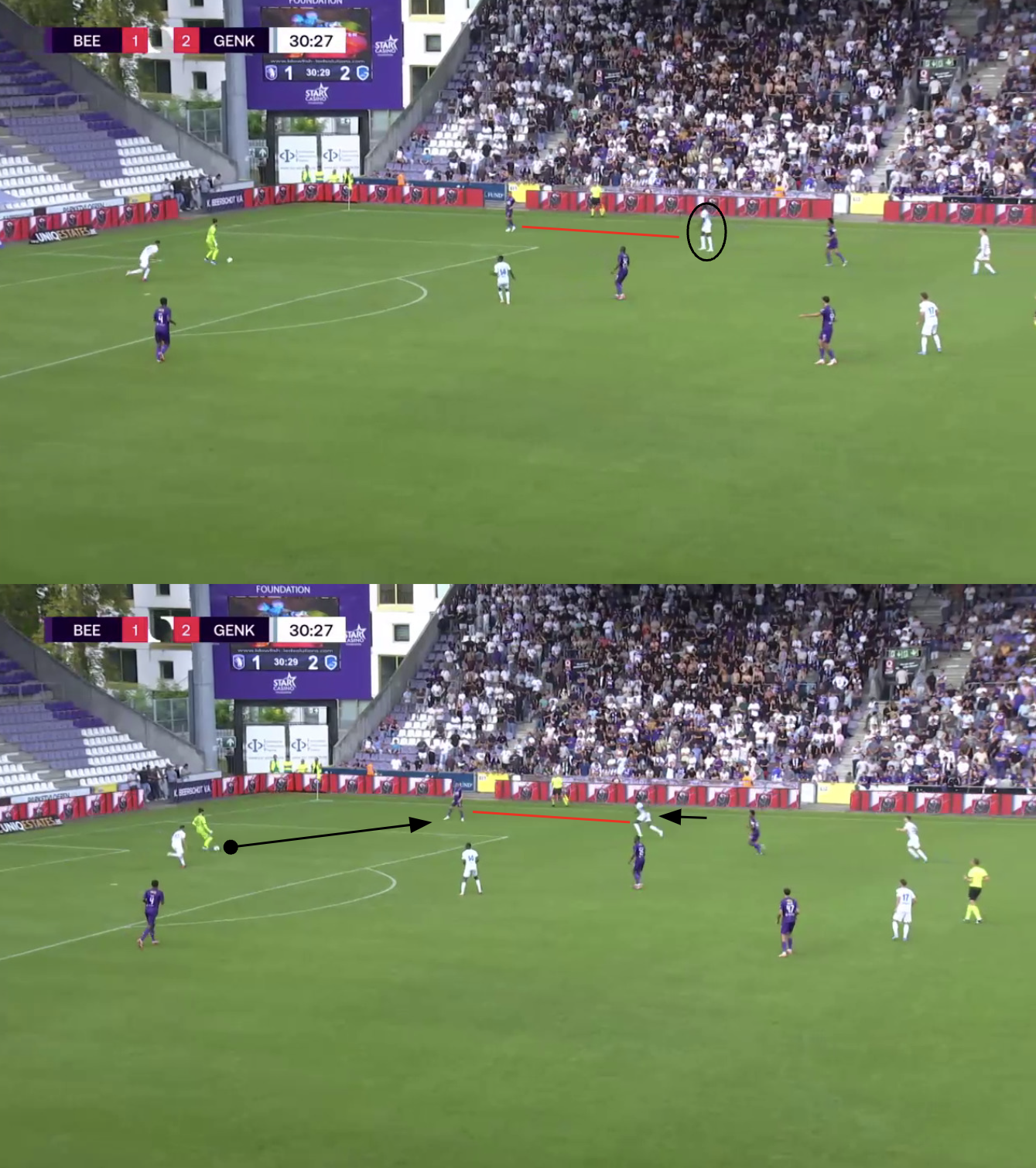
The example above is from the game against Beerschot.
In the first image, Arokodare stands on the right side of the penalty area, waiting for a pass out wide to the defender to trigger his pressing action.
The problem in this situation is that Arokodare’s starting position is unnecessarily too far away from the defender, which is highlighted by the red line between them.
Thus, his task is made more difficult in an attempt to win the ball back when/if it comes to him there.
In image two, the ball eventually goes to the defender, which Arokodare reacts to as the goalkeeper plays the ball. He then begins moving towards the defender to press him.
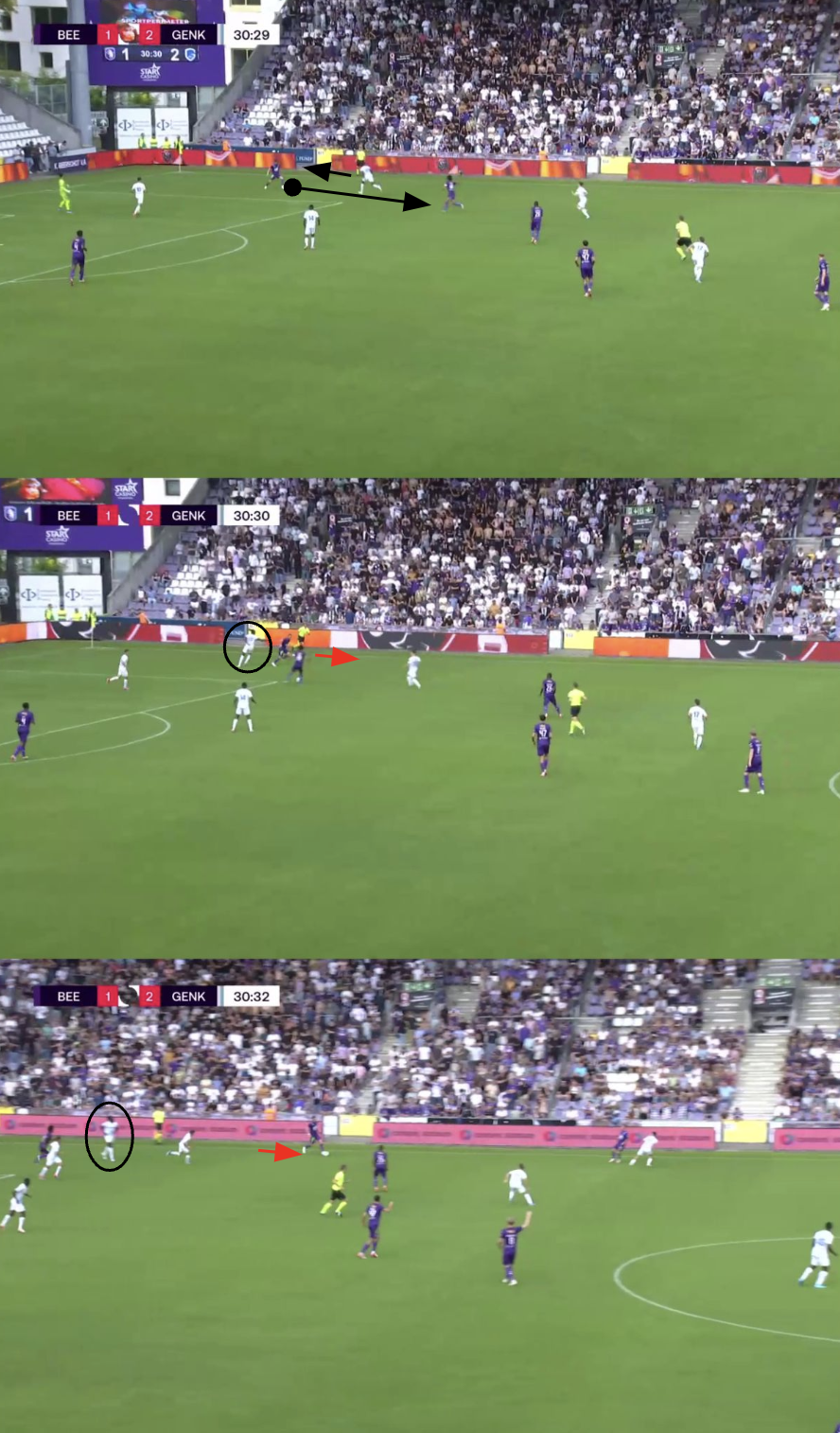
Because Arokodare’s starting position was so far away from the defender, the latter is even able to receive and get the ball under control and face in an attacking direction in image three, all with Arokodare not able to close the gap enough in a short period of time.
As other Beerschot players come across to offer themselves as short passing options in image four, Arokodare’s attempts to press become even harder as he doesn’t get enough support from his teammates to push up higher.
This allows Beerschot to play their way around and past him, which they do in image five.
Although that’s admittedly not all on him, his poor starting position before the press and waiting too long to close the gap made it harder for his press to be successful.
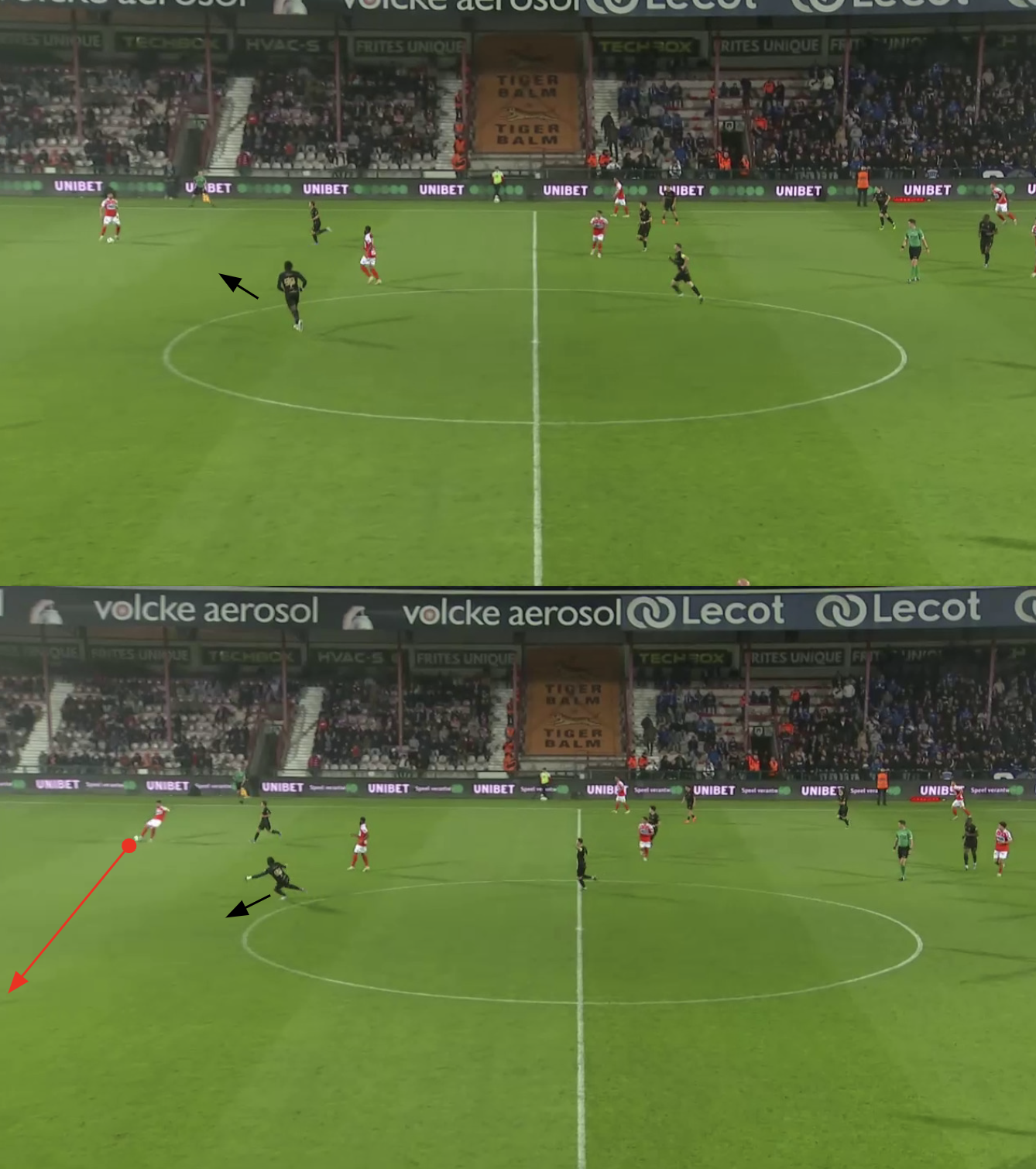
Here’s another example from the game against Kortrijk on October 5th.
In the first image, we can see Genk attempting to push up with two front players, one of them being Arokodare, with Kortrijk possessing the ball through their left centre-back on his side.
As he switches the play to his partner in image two, we can also notice Arokodare sharply changing the direction of his movement, almost as if he didn’t expect the ball to be played across to the opposite side.
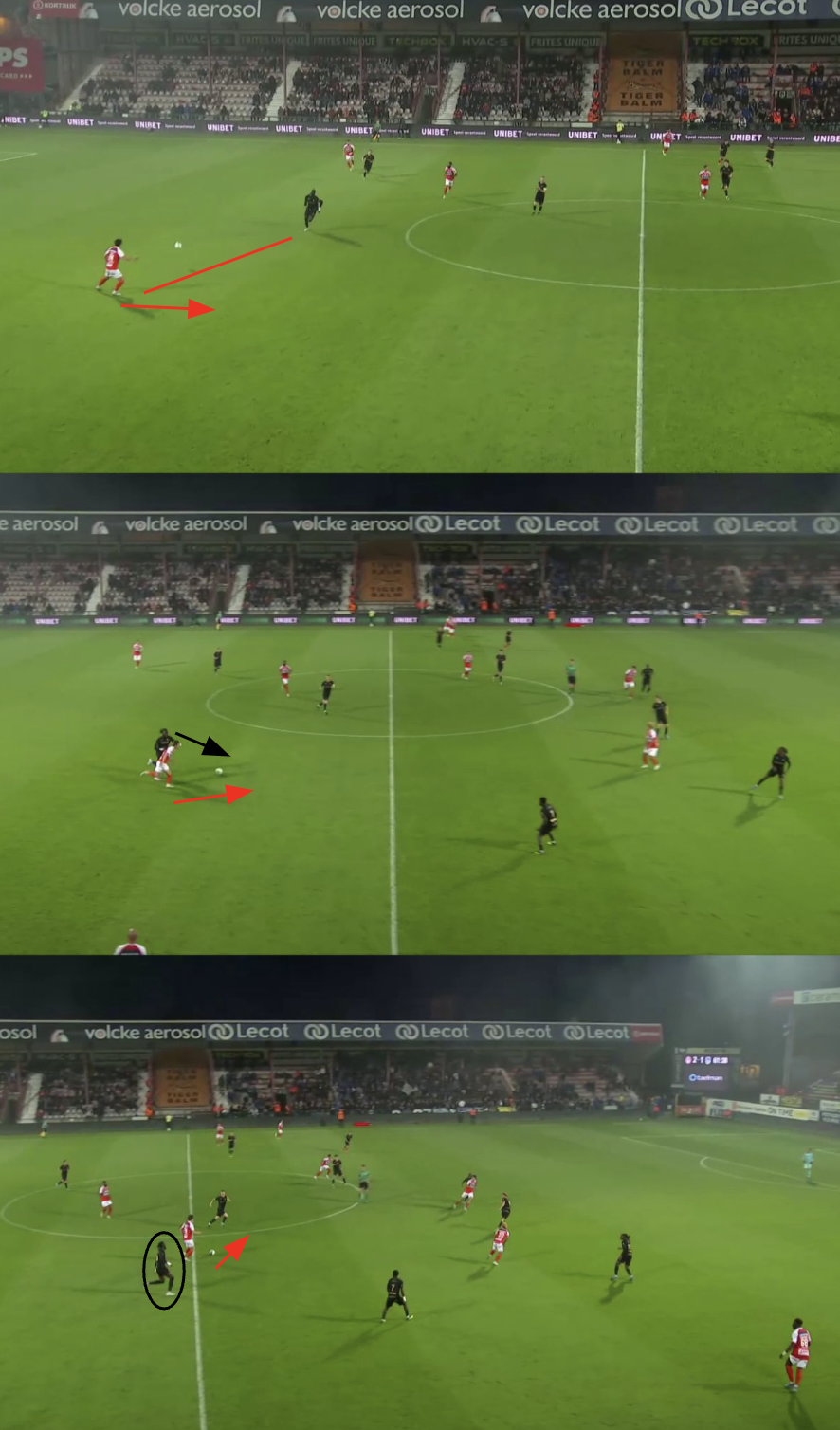
As the switch pass is moving quicker to its target than Arokodare can contort his body to go in the other direction, the right centre-back from Kortrijk already has an edge on him and space to move into by the time he receives the ball in the third graphic.
Then, in image four, we can see a half-hearted attempt from Arokodare to challenge for the ball, resulting in neither a successful retrieval of possession nor even a foul as the defender goes past him and carries his run into Genk’s half; in image five.
Again, the issue here was Arokodare’s starting position.
He wasn’t aware enough of the space between him and the right centre back and made a mistake trying to push up to the other side when a teammate was already pushing up over there.
This left him with too much ground to cover in case a switch pass occurred, and then he topped it off with a tame attempt to win the ball back, which was unsuccessful.
So, while his movement off the ball has been great in terms of goalscoring, there is work that needs to be done in terms of his pressing and defensive actions, especially as he’s averaged less than one ball recovery per game in the attacking half so far this season.
Tolu Arokodare Link-Up Play
Another area that can be measured regarding his contributions to his team that require the ball is his link-up play, which is pretty solid for a 6’6’ penalty area predator of his profile.
Let’s look at some examples.
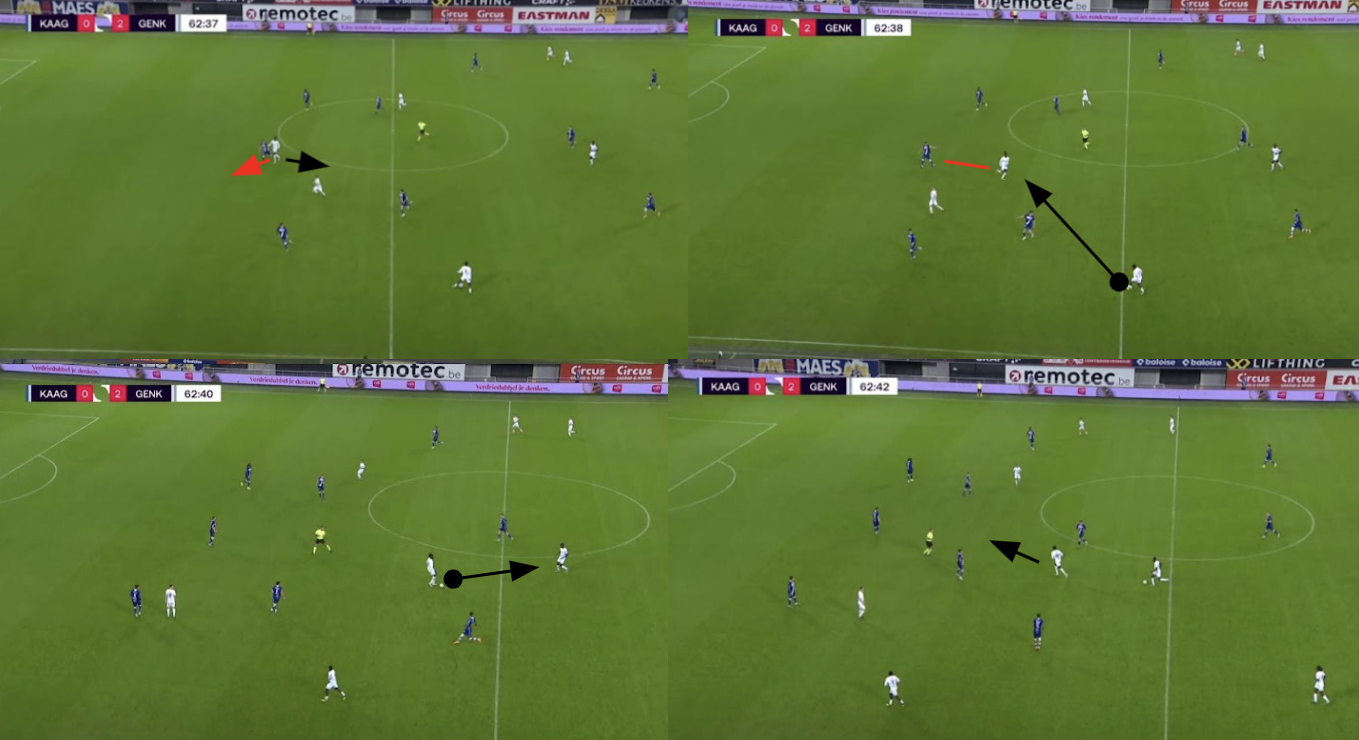
Returning to the Gent game, Arokodare can be spotted up front in the first image.
In image two, he stays off the shoulder of a defender before creating separation with a movement in the opposite direction, which allows him to become a short-passing outlet.
He receives at around the halfway line and passes back short to a defender, which allows the play to keep moving in the following two illustrations before returning to his post up front.
It is simple enough but effective in getting himself involved in the possession phase, highlighting his willingness to drop deeper to support and his movement into space once again.
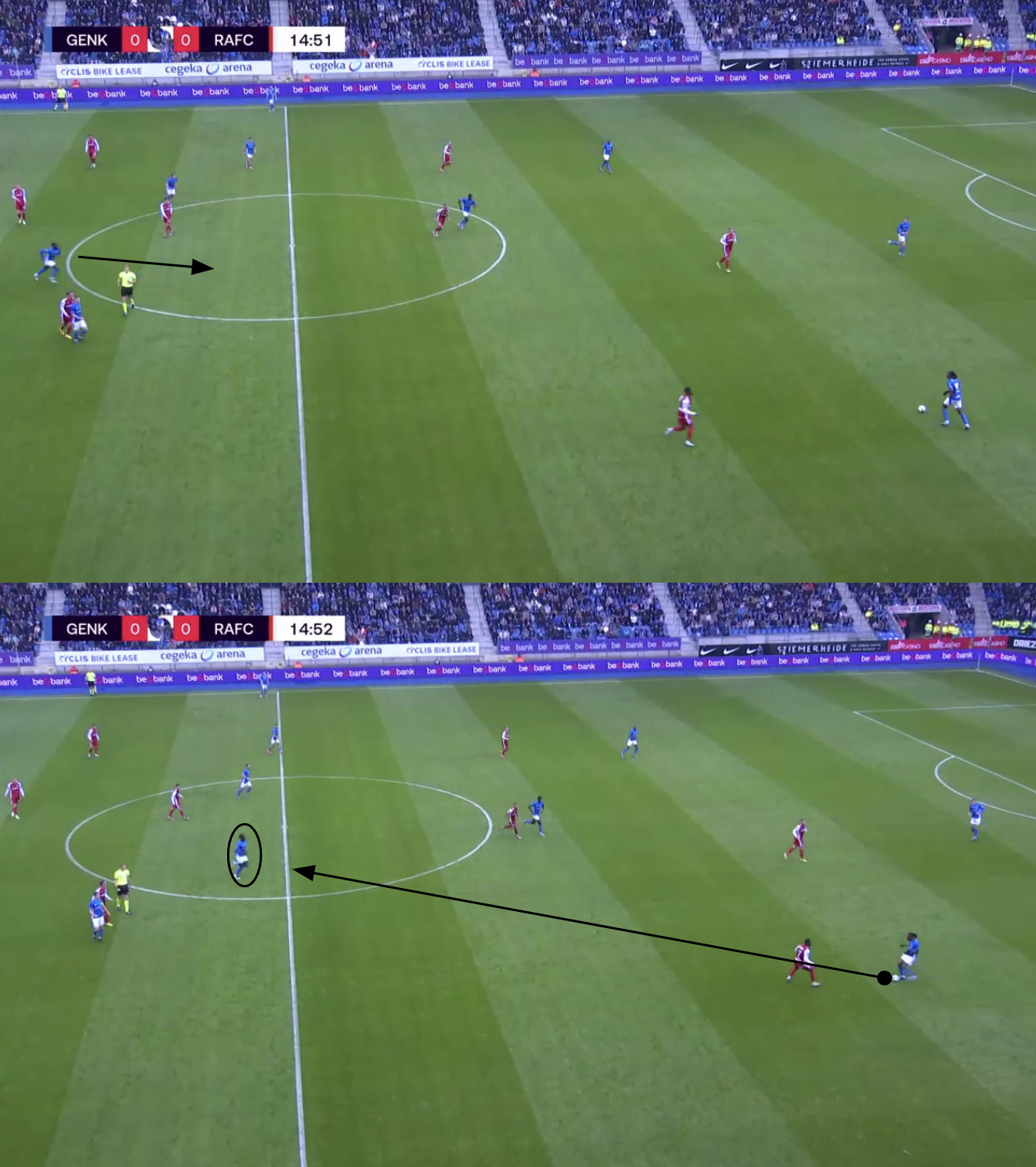
Here’s a similar example of his movement into a deeper area to receive the ball from the top-of-the-table clash against Antwerp early in November.
With Genk struggling to find an open player to pass to out of the back due to Antwerp’s man-to-man coverage, Arokodare makes the run back from up front between their four-man press and their midfielders in the images above, creating an outlet to progress the play forward that wouldn’t be available to the defender in possession otherwise.
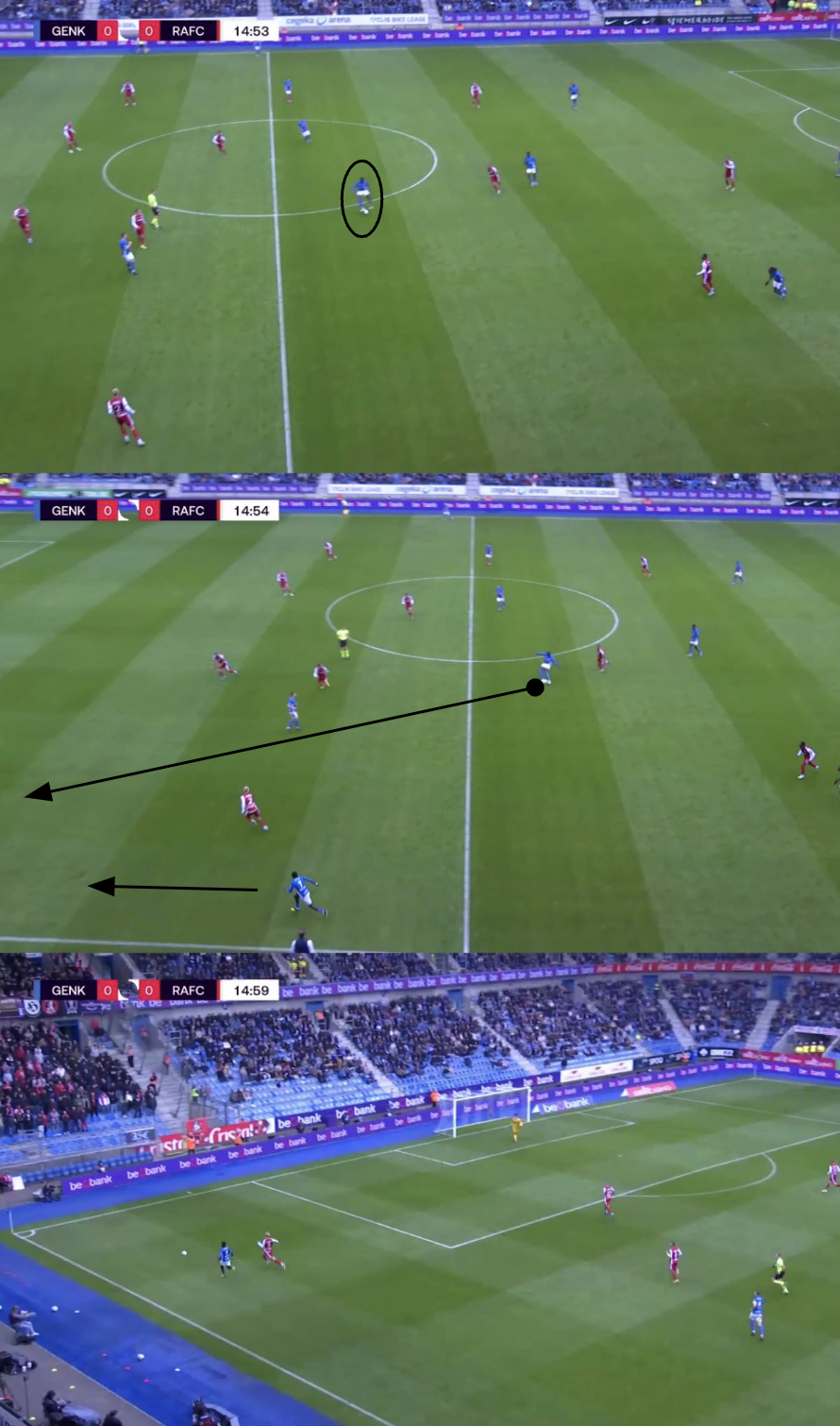
In addition, we can also see some playmaking ability from Arokodare above, with a quick ball played over the Antwerp defence after spotting Bonsu Baah’s run into space on the left wing, which was successfully picked out.
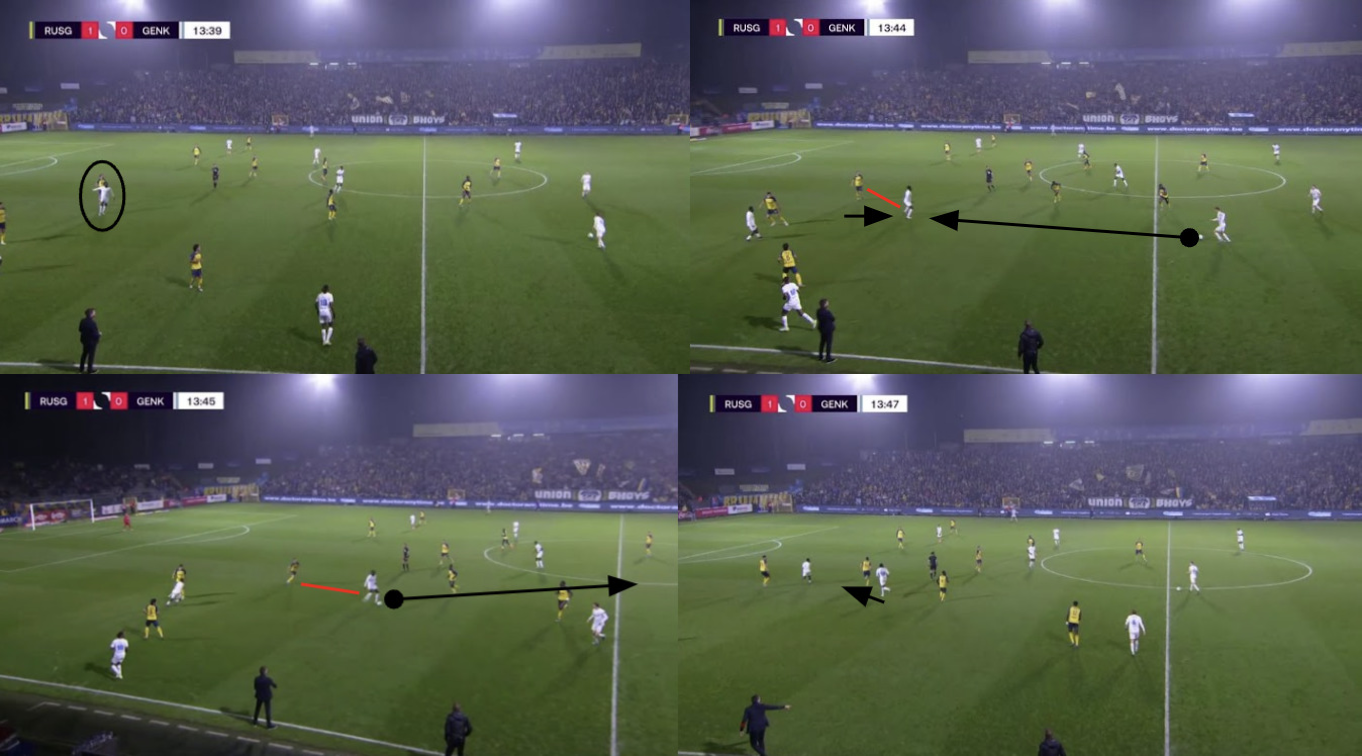
This last example, which focuses on his link-up play, comes from Genk’s last league game, a 4-0 reverse at the hands of Union Saint-Gilloise.
In the first image, we can see Arokodare circled up front, pointing to his centre-back in possession to try and play the pass towards the left wing where a run was being made off the ball that he thought could have been picked out.
That didn’t come to fruition, and then Arokodare again did well to create separation from his marker in image two by dropping a little deeper to offer himself a progressive passing option, with very few available in this situation.
As he receives the ball in image three, the previous marker begins to make the run across to try to nick possession from behind, with another Union player coming across to attempt the same.
Arokodare ends up playing it calmly backwards to the back in image four, allowing Genk to start their build-up again and escape Union’s press.
While Arokodare isn’t a technical wizard or in the ilk of a Harry Kane as far as being a deep-lying forward who participates a lot in possession and build-up play, he is capable of offering support to his team when needed in this area, as we’ve seen on a few occasions above.
Tolu Arokodare Areas for Improvement
Hold-Up Play & Winning Duels
We’ve seen a lot of things Arokodare is good at in this scout report; now it’s time to look at a couple of things he could work more on in this next section.
The first one is in his duels on the pitch, particularly when playing with his back to goal.
Despite being 6’6’ and 220 lbs, Arokodare’s hold-up play and duel success rate aren’t as good as one might expect, and the examples below may highlight some of why that is the case.
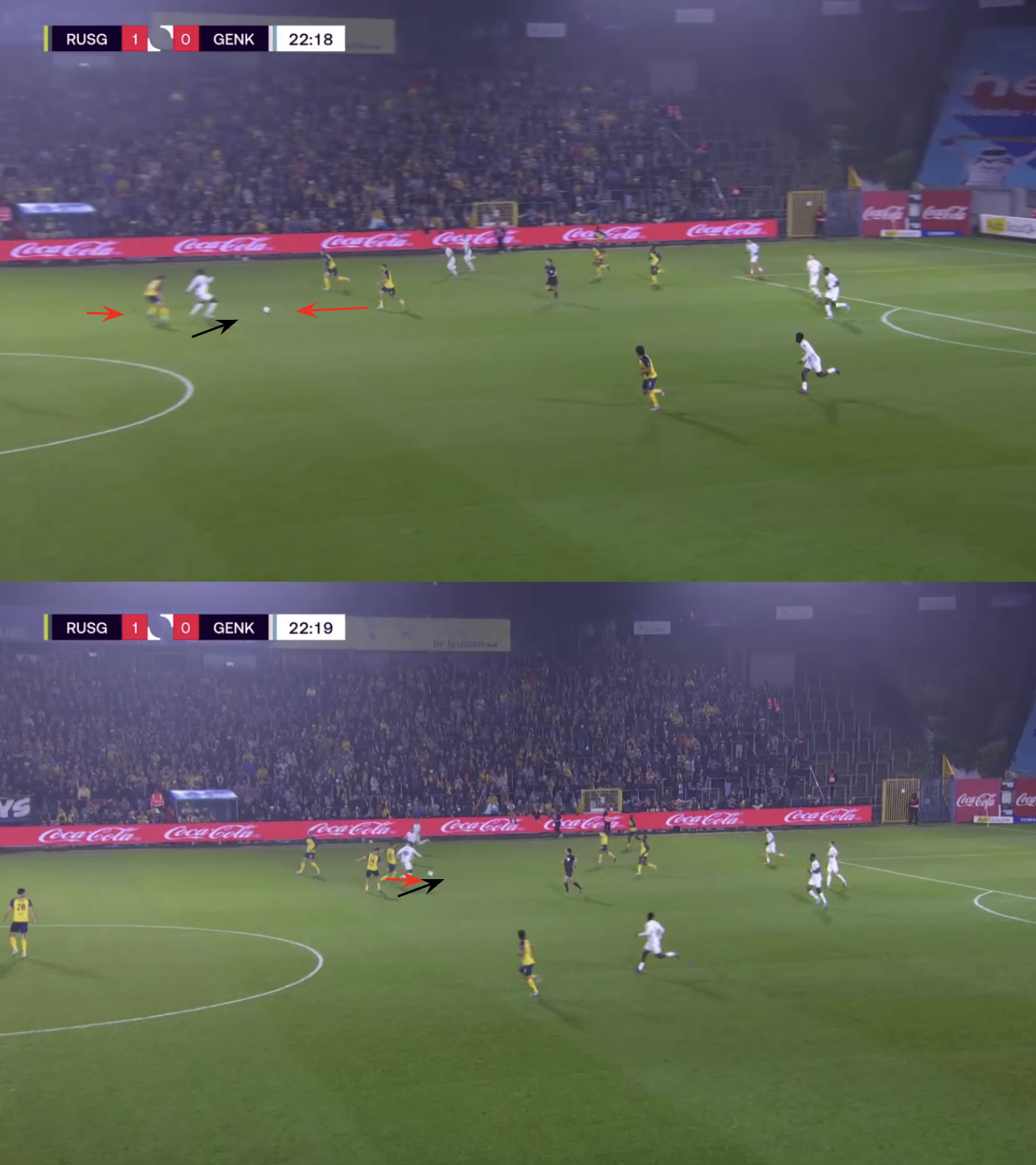
For this sequence, we’ll go back to the Union game.
Genk moves the ball out of their defensive zone and passes it to Arokodare, who returns from deep to try to hold up the play.
In image one, a defender comes up right behind him, and another opponent is nearby looking to win the ball off him in case of a poor first touch and control.
Which is exactly what happens here.
Arokodare’s touch is too heavy, making it more difficult for him to control the ball for long.
Union forces him further backwards in the second image and away from their goal.
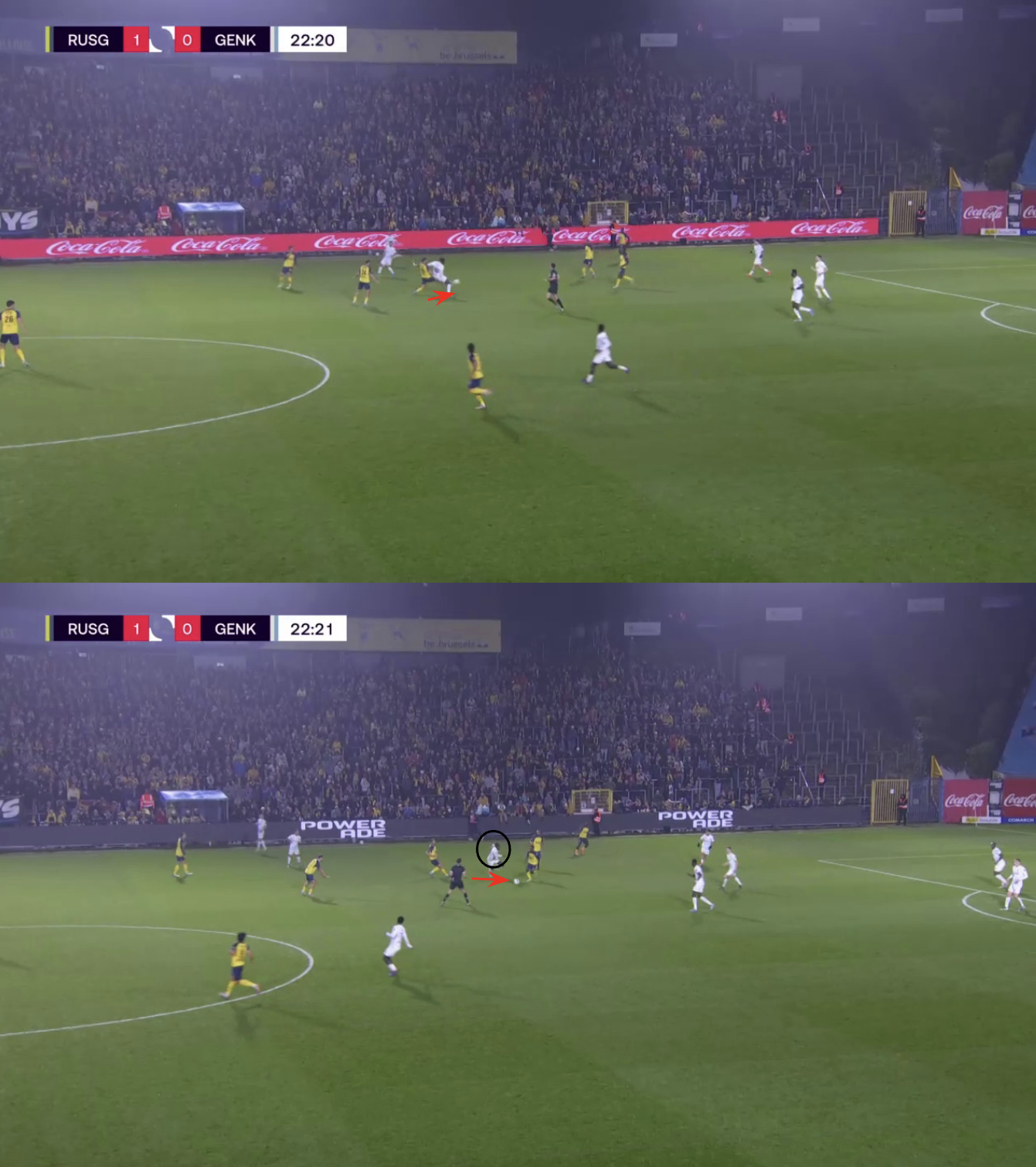
Eventually, they get the opportunity to nick the ball off the Nigerian, as they do in image three, with the ball coming up from behind him.
This leads to Union regaining possession about twenty-five yards from the Genk goal in the fourth image.
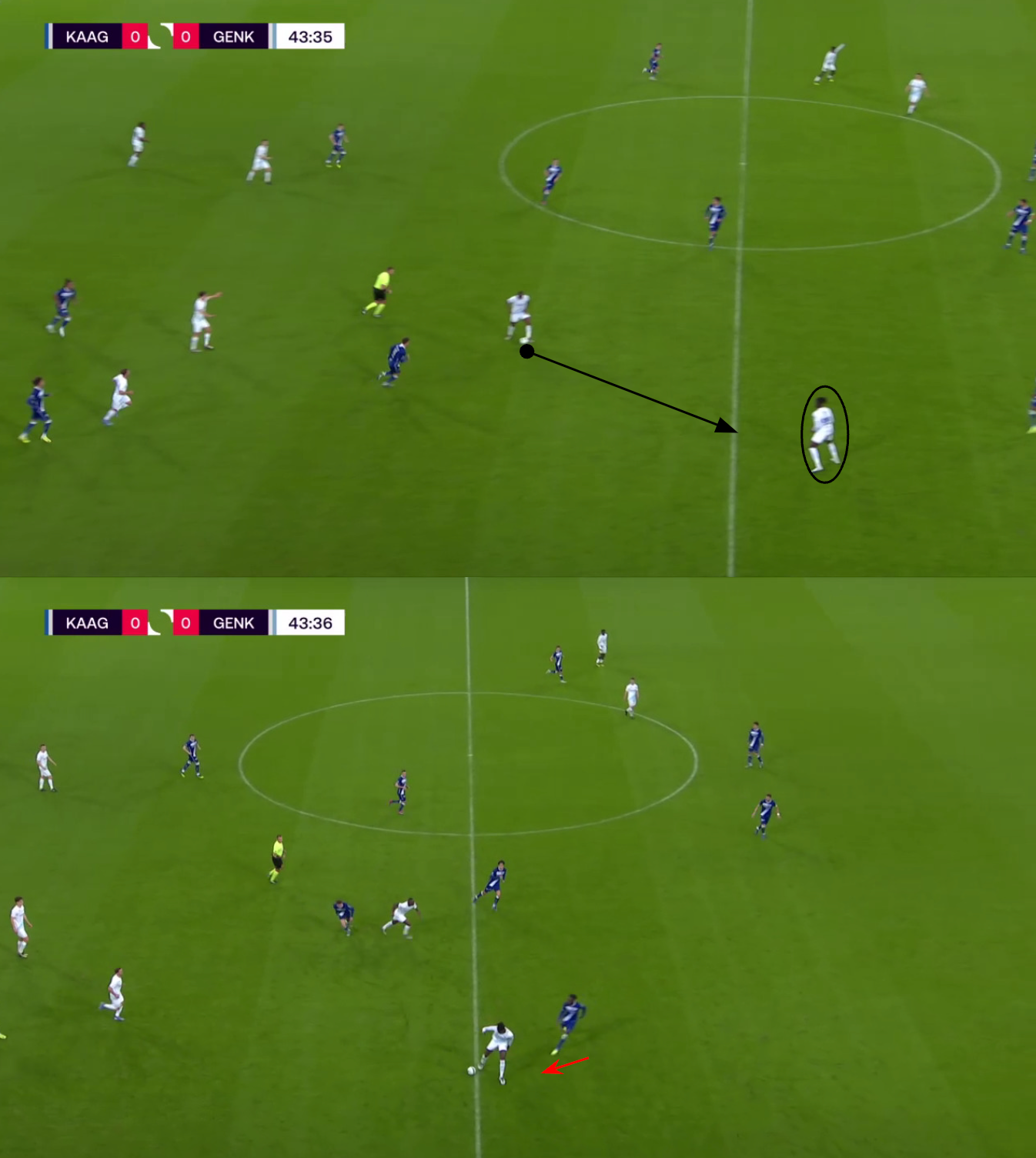
An even better example here of his lacklustre hold-up play from the Gent away match.
With Genk looking to break on the counter, Arokodare finds himself in a deeper position, looking to receive the ball on the right-hand side, as pictured above in the first image, with him being the circled player.
The ball does come to him, but his first touch puts him in a sticky situation as a Gent defender comes across to defend against him.
This leaves Arokodare with two options: either hold the ball up and play it backwards or try to make a play himself.
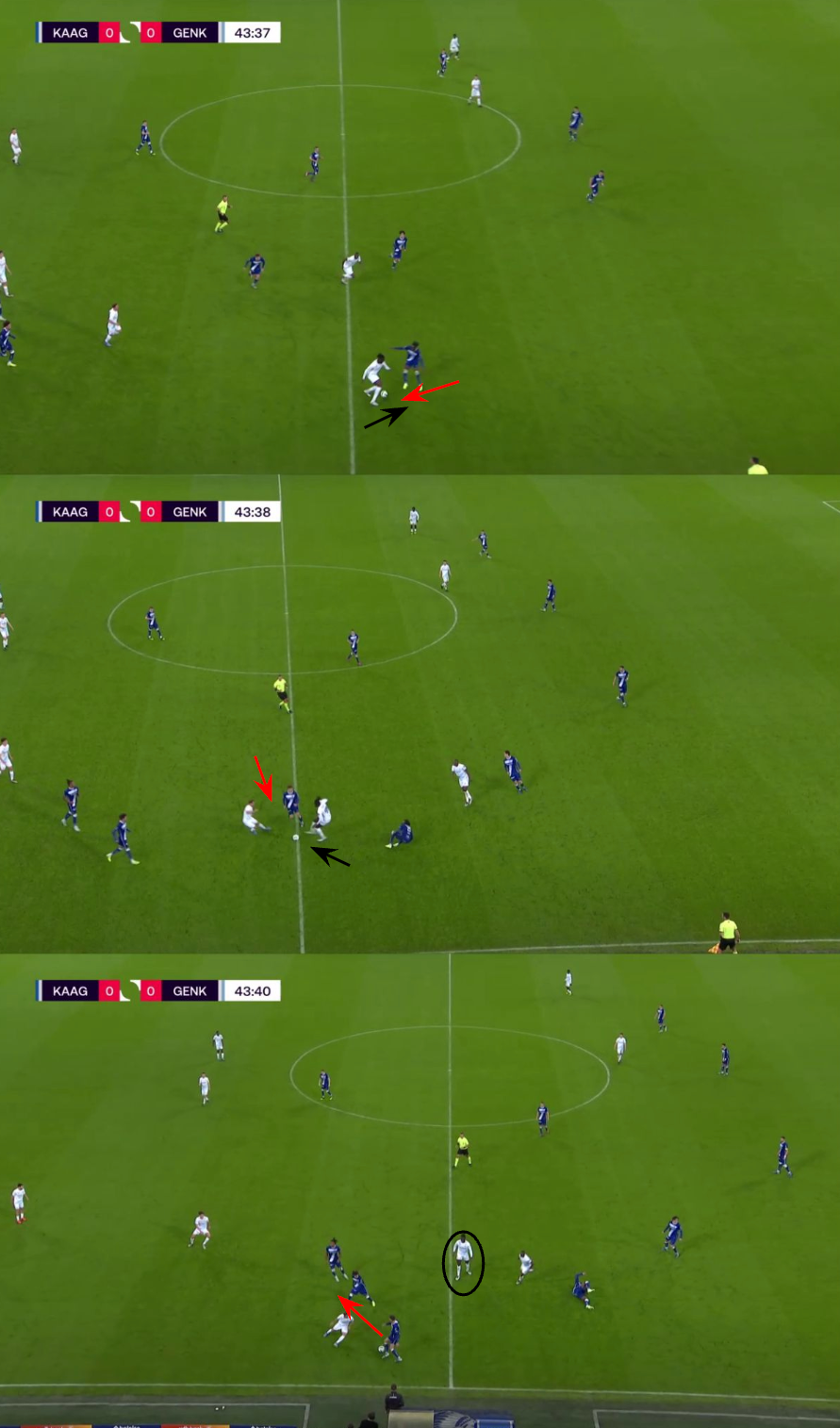
As we see in image three, he chose the second option, which was the wrong decision.
The Gent defender was so close to him that he could win the ball cleanly without fouling the forward.
In the following illustration, Arokodare tries to atone for his mistake immediately but is unsuccessful as Gent wins the ball back and starts to go the other way.
Even the stats seem to support Arokodare’s underwhelming work in this area of his game.
With an average of around twenty-two duels per game, he only wins 37% of them and 21% of nine offensive duels alone each outing.
He also averages around nine possession losses per game, with most coming in the opposition half, likely in situations like some of the ones we’ve uncovered here.
Tolu Arokodare Passing Abilities
In line with the above, his passing also needs improvement if he continues developing at a higher level.
Let’s look at his passing stats this season below.

With the exception of back passes, he scores less than 80% accuracy in all other types listed and isn’t involved enough in games, with only fourteen passes on average.
While he is a centre-forward first and foremost and usually brings the goods as far as his main job, there’s no doubt that football is moving beyond the strikers who bring little else to the team.
If Arokodare is to follow the same path as some of his countrymen who left Belgian club football for greater things, he’ll have to keep improving his game, particularly on the ball, which still isn’t at a high enough level.
If he can do that, he could be a very interesting choice for a top-five European league club to consider.
Conclusion
Victor Osimhen, Taiwo Awoniyi, Gift Orban, Victor Boniface, Terem Moffi, and many of Nigeria’s forward options in their current generation at some point passed through Belgium, where they made a name for themselves before going on to the elite clubs and leagues in Europe.
With Tolu Arokodare, the current league leaders’ top scorer, and at just 24 as of his November 23rd birthday, there is reason to be optimistic that he can follow in their footsteps.

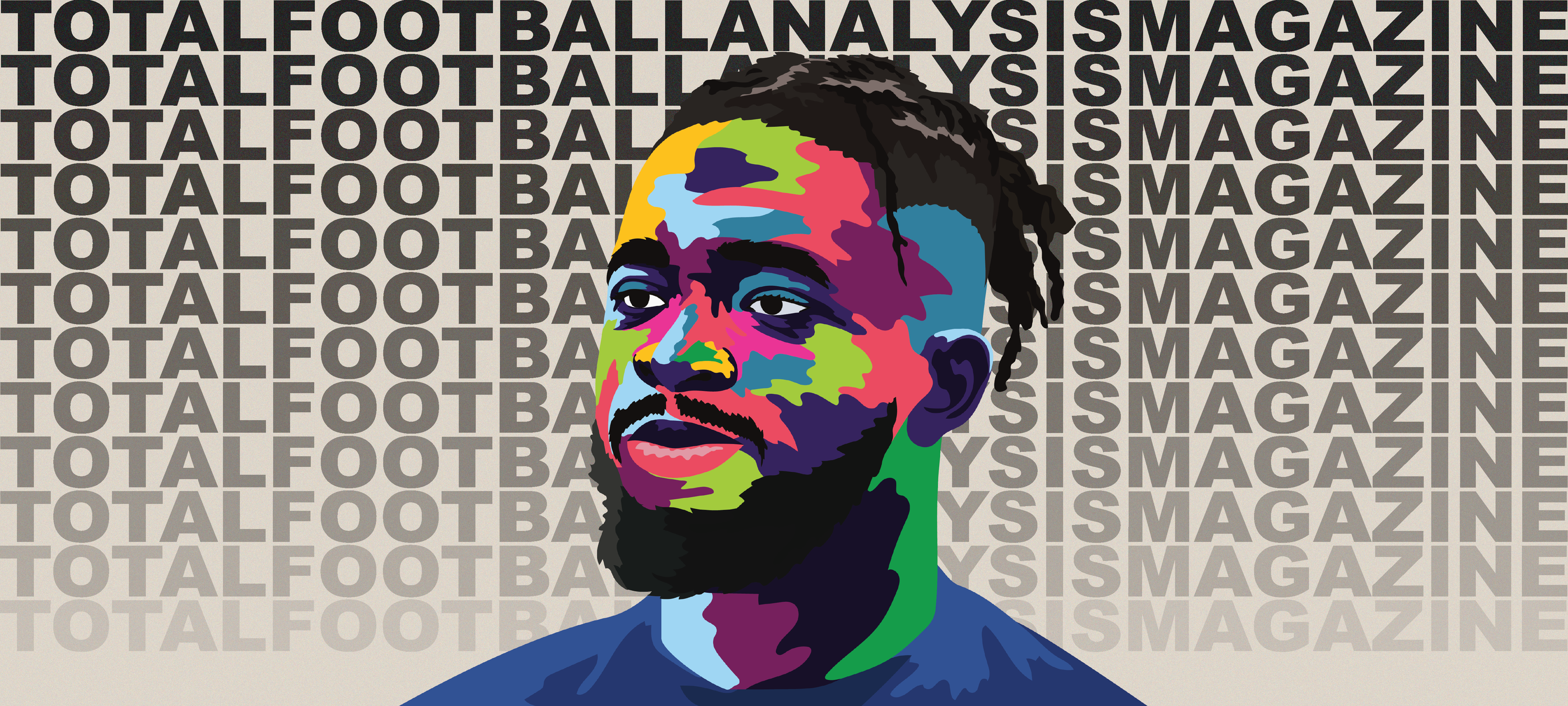




Comments